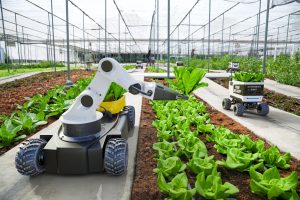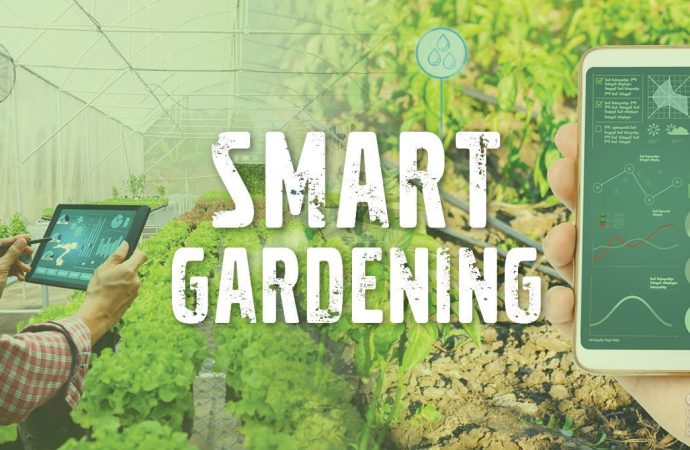Introduction Imagine a garden that waters itself, adjusts lights at sunset, and sends alerts when plants need care. Smart garden technology makes this possible. By adding simple devices and systems, you can grow healthier plants with less effort. Whether you have a small balcony or a large backyard, integrating smart tools can save time, cut
Introduction
Imagine a garden that waters itself, adjusts lights at sunset, and sends alerts when plants need care. Smart garden technology makes this possible. By adding simple devices and systems, you can grow healthier plants with less effort. Whether you have a small balcony or a large backyard, integrating smart tools can save time, cut water use, and boost plant growth. In this guide, we will explore the benefits of smart garden devices, the types of systems available, and step-by-step tips to bring your garden into the digital age.
Why Choose Smart Garden Technology?
Smart tools can transform how you care for plants. Here are key reasons gardeners are making the shift:
- Water Savings: Automated irrigation systems target water where it is needed most. Sensors detect soil moisture and water only when levels fall below a set point. This avoids overwatering and cuts water bills.
- Healthier Plants: Consistent care means stronger roots and better blooms. Smart sensors track soil pH, temperature, and light. Alerts help you react quickly to changes, preventing stress and disease.
- Time Efficiency: Busy schedules make it hard to tend a garden daily. Automated schedules and remote controls let you manage watering and lighting from your phone. A quick tap can check garden status or start a watering cycle.
- Cost Savings: While initial setup has costs, lower water use and fewer lost plants save money over time. Many devices run on solar power or low-voltage batteries, reducing electricity bills.
- Fun and Learning: Smart gardening can be a family project. Children and adults alike enjoy watching real-time data and learning how plants respond to their care.
Key Components of a Smart Garden

Image by: Yandex.com
Smart garden setups vary by need and budget. Below are core components to consider:
1. Smart Irrigation Systems
Irrigation is the backbone of any garden. A smart irrigation system typically includes:
- Controller Unit: Central hub that runs watering schedules.
- Soil Moisture Sensors: Measure moisture at root level.
- Valves and Pipes: Deliver water to drip lines or sprinkler heads.
- Weather Integration: Adjusts watering based on rain forecasts.
You can find entry-level kits for small gardens or professional systems for large landscapes.
2. Garden Sensors
Sensors collect data on key plant factors:
- Soil Moisture Sensors: Report when to water.
- pH Sensors: Ensure soil remains in the right acidity range.
- Light Sensors: Monitor sunlight hours and intensity.
- Temperature and Humidity Sensors: Track micro-climate conditions.
Many sensors send readings to a smartphone app or cloud dashboard for easy monitoring.
3. Smart Lighting
Grow lights and pathway lights can be automated:
- LED Grow Lights: Provide full-spectrum light for indoor or shaded gardens.
- Solar Pathway Lights: Charge by day and light walkways at night.
- Timers and Dimmers: Adjust light schedules and intensity.
Smart lighting can help plants with low natural light and highlight garden features.
4. Automated Planters and Hydroponics
For small spaces or vegetable gardens, consider:
- Self-watering Planters: Built-in reservoirs and wicking systems.
- Hydroponic Towers: Grow herbs and greens in stacked systems with water pumps.
- App Controls: Manage nutrient delivery and lighting schedules.
These systems save space and water while producing fresh herbs or salads year-round.
5. App and Voice Control
Most smart devices connect via Wi-Fi or Bluetooth:
- Mobile Apps: Centralize data and controls for irrigation, lights, and sensors.
- Voice Assistants: Use smart speakers to start a watering session or check soil moisture.
- IFTTT and Integrations: Link garden devices with weather services or home automation platforms.
This makes it easy to manage your garden from anywhere.
How to Plan Your Smart Garden
A clear plan ensures a smooth setup and avoids wasted costs:
- Assess Your Garden Size and Needs: Note sun exposure, soil type, and plant types. A small herb garden needs fewer sensors than a large vegetable plot.
- Set a Budget: Basic sensor kits start under fifty dollars. Full-scale irrigation systems can reach a few hundred. Decide which features matter most.
- Choose Compatible Devices: Look for systems that work together or share a common app. This prevents frustration when devices use different platforms.
- Map Out Sensor and Valve Locations: Mark spots for moisture sensors where roots grow deepest. Plan pipe runs to ensure even coverage of drip lines or sprinklers.
- Check Power and Connectivity: Solar-powered sensors reduce wiring needs. Wi-Fi range extenders or mesh networks can help if your garden is far from the house.
- Plan for Expansion: Leave room for new sensors or lights. Modular systems let you add devices without a full replacement.
Step-by-Step Installation
Follow these steps for a basic smart irrigation and sensor setup:
- Install the Controller: Mount it near a power source and your home router. Connect it to your Wi-Fi network following the manufacturer’s app instructions.
- Lay Pipes and Valves: Dig shallow trenches for drip tubing or run PVC pipes for sprinklers. Secure valves at the controller outlet and at each zone.
- Place Soil Moisture Sensors: Push sensors into the soil at root depth in each zone. Avoid placing them too close to pipes or surface water.
- Set Up Weather Integration: Link the controller app to a local weather service. This ensures the system skips watering if rain is predicted.
- Create Watering Schedules: In the app, assign each zone a watering duration and frequency. Start with shorter cycles and adjust based on soil readings.
- Install Lights and Other Devices: Mount solar pathway lights along walkways. Position LED grow lights above indoor planters at the recommended height.
- Test the System: Run a manual cycle to check for leaks, proper flow, and sensor readings. Tweak schedules and settings as needed.
Maintenance and Troubleshooting
Regular care keeps your smart garden running smoothly:
- Check Sensor Batteries: Replace or recharge seasonal batteries.
- Clean Sensor Probes: Wipe off soil buildup for accurate readings.
- Inspect Drip Lines and Sprinklers: Remove clogs and repair leaks.
- Update Firmware: Install software updates for controllers and sensors.
- Review Data Monthly: Look for trends in soil moisture or temperature that may require adjusting schedules.
If a sensor reports odd values, compare with a manual soil check. For Wi-Fi drops, consider a range extender or mesh network node.
Cost Considerations
Initial costs can vary:
- Entry-Level Kits: $50 to $150 for a moisture sensor and simple controller.
- Mid-Range Systems: $200 to $500 for a multi-zone irrigation kit with several sensors and valves.
- High-End Solutions: $500 and up for professional-grade controllers, dozens of sensors, and commercial-style app integrations.
Factor in any installation services if you prefer professional help. Over time, water savings and healthier plants often offset the upfront investment.
Future Trends in Smart Gardening
Smart garden technology is evolving quickly:
- AI-Driven Insights: Machine learning can predict plant needs based on historical data and local weather.
- Robotic Weed Control: Small robots use cameras and sensors to spot and remove weeds autonomously.
- Advanced Hydroponics: Fully closed systems that recycle nutrients and water for near zero waste.
- Blockchain Traceability: Track organic or boutique plant growth through secure ledgers for farm-to-table verification.
These innovations promise even more precise, efficient, and enjoyable gardening in the years ahead.
Conclusion
Integrating smart technology in gardens brings convenience, efficiency, and better plant health. By choosing the right combination of smart irrigation systems, sensors, lighting, and app controls, you can create a garden that practically cares for itself. Planning your setup, following step-by-step installation, and maintaining devices regularly ensures long-term success. While costs vary, water savings and reduced plant loss make smart upgrades worthwhile. As technology advances, expect new tools like AI recommendations and robotic helpers to join your gardening toolkit. Embrace smart garden technology today, and enjoy a greener, more vibrant outdoor space with less work and more rewards.

















Leave a Comment
Your email address will not be published. Required fields are marked with *